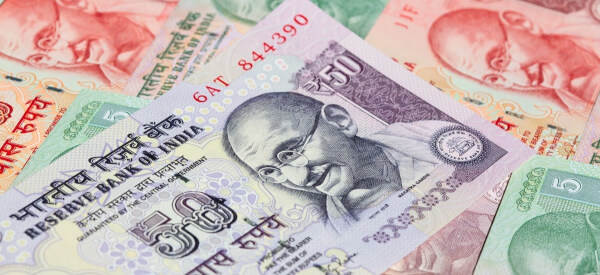Guide to Sending and Receiving Cash Internationally for India [2025]
Learn how to send and receive cash internationally from India, compare providers, fees, and exchange rates, plus discover digital alternatives like Wise.

If you're a freelancer, business owner, or individual in India receiving money from abroad, you've likely encountered the term "FIRC." This comprehensive guide explains everything you need to know about Foreign Inward Remittance Certificates in 2025, including how to obtain one, the costs involved, and why they're essential for your international transactions.
We'll also introduce you to Wise Business Account for freelancers and businesses in India that can help you save on receiving international payments with low, transparent fees and mid-market exchange rates.
A Foreign Inward Remittance Certificate (FIRC) is an official document issued by authorized banks in India that serves as proof of receiving payment from outside India. It's essentially a receipt that confirms you've received foreign currency from an overseas source, which has been converted to Indian Rupees (INR).
Different types of certificates you should know about:
The FIRC contains crucial information including the remitter's details, beneficiary information, purpose of remittance, amount received in foreign currency, conversion rate, and the INR amount credited to your account.
FIRCs serve several important purposes for Indian recipients of international payments:
While the exact format may vary slightly between banks, a standard FIRC certificate typically includes:
The FIRC number is particularly important as it serves as a reference for the specific transaction and is often required when submitting documentation to tax authorities or other regulatory bodies.
In India, FIRCs are issued by:
Major banks that issue FIRCs include HDFC Bank, ICICI Bank, State Bank of India (SBI), Axis Bank, Yes Bank, and other commercial banks authorized to handle foreign exchange transactions.
The process of obtaining a FIRC varies slightly depending on your bank, but here's a general step-by-step guide:
Ensure proper purpose code: When receiving international payments, make sure the correct purpose code is used by the sender (for example, P0802 for software services)
Wait for the transaction to complete: The FIRC can only be issued after the foreign remittance has been credited to your account
Submit a request to your bank:
Submit supporting documents:
Pay the FIRC issuance fee
Collect or download your FIRC:
The processing time typically ranges from 3-10 working days, depending on the bank and whether you're requesting a physical or electronic FIRC.
If your bank requires a formal request letter for issuing a FIRC, here's a template you can use:
Your Name
Your Address
Your Contact Number
Your EmailDate:
To,
The Branch Manager
Bank Name
Branch AddressSubject: Request for issuance of Foreign Inward Remittance Certificate (FIRC)
Dear Sir/Madam,
I, (Your Name), maintain a (Current/Savings) account number (Your Account Number]) with your bank. I have received a foreign inward remittance with the following details:
- Remittance Amount:
- Date of Credit:
- Reference/UTR Number:
- Remitter's Name:
- Remitter's Country:
- Purpose of Remittance:
I request you to issue a Foreign Inward Remittance Certificate (FIRC) for the above transaction for (mention specific purpose - tax filing/GST compliance/export verification, etc.).
I am enclosing the following documents:
- Copy of bank statement showing the credit
- Invoice related to the payment (if applicable)
- Any other documents as required
I authorize you to deduct the applicable charges from my account.
Thank you for your assistance.Yours sincerely,
Your Signature
Your Name
For businesses and freelancers in India frequently receiving international payments, Wise Business offers a convenient alternative. Here's how Wise Business offers freelancers and businesses in India:
Get started with Wise Business🚀
If you haven't received your FIRC after the standard processing time:
If your FIRC contains errors:
Most banks allow you to request FIRCs for transactions up to 1-2 years old. You'll need:
A Foreign Inward Remittance Certificate is an essential document for anyone in India receiving payments from abroad. Whether you're a freelancer, business owner, or individual receiving foreign funds, understanding how to obtain and use FIRCs is crucial for tax compliance and regulatory requirements.
While the process varies slightly between banks, the general steps remain consistent: ensure proper transaction details, submit a formal request with supporting documents, pay the required fee, and wait for processing.
For those looking to streamline their international payment process, services like Wise offer convenient solutions with integrated FIRC request capabilities, making it easier to manage your global income while staying compliant with Indian regulations.
Remember to keep your FIRCs organized and accessible, as they may be required during tax filing, GST returns, or financial audits.
*Please see terms of use and product availability for your region or visit Wise fees and pricing for the most up to date pricing and fee information.
This publication is provided for general information purposes and does not constitute legal, tax or other professional advice from Wise Payments Limited or its subsidiaries and its affiliates, and it is not intended as a substitute for obtaining advice from a financial advisor or any other professional.
We make no representations, warranties or guarantees, whether expressed or implied, that the content in the publication is accurate, complete or up to date.

Learn how to send and receive cash internationally from India, compare providers, fees, and exchange rates, plus discover digital alternatives like Wise.

Learn how to get your FIRC (Foreign Inward Remittance Certificate) or FIRS from ICICI Bank in India. This guide explains the difference and the process.

Need an HDFC Bank FIRC (Foreign Inward Remittance Certificate) in India? This guide explains the process, eligibility, fees, and how Wise can be an alternative.

Complete guide to PayPal FIRC (Foreign Inward Remittance Certificate) for businesses in India.

Need an SBI FIRC (Foreign Inward Remittance Certificate) in India? This guide goes over what the process entails and introduces Wise Business as an alternative.